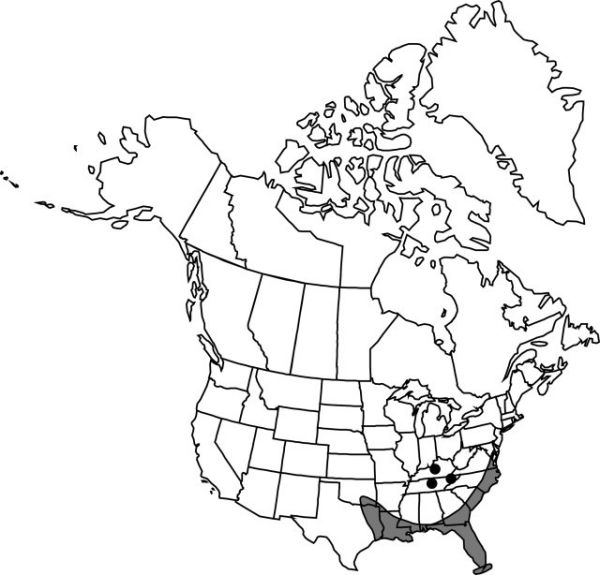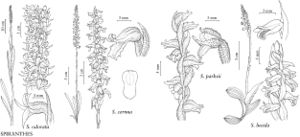Spiranthes odorata
Gen. Sp. Orchid. Pl., 467. 1840.
Plants 10–100+ cm. Roots several, horizontally spreading, slender, mostly to 0.3 cm diam. Leaves persisting through anthesis, basal, gradually or occasionally abruptly reduced upward on stem, base of blade sheathing stem or narrowed to broad petiole over 7 mm wide, ascending to spreading (rigidly so because of aerenchymatous thickening of blade); blades on proximal cauline sheaths spreading-recurved, frequently also on distal (then extending to inflorescence), elliptic to oblong- or linear-oblanceolate, to 52 × 4 cm. Spikes tightly spiraled, 3–4 flowers per cycle of spiral; rachis moderately pubescent, some trichomes capitate, glands obviously stalked. Flowers nodding, white, urceolate to gaping, claw of lip at low (less than 30°) angle to lamina, base appearing only slightly inflated; sepals distinct to base, 4–18 mm; lateral sepals loosely associated with dorsal and petals or spreading, sometimes arching above flower; petals lanceolate to elliptic-lanceolate, 4–18 mm, apex acute to obtuse or emarginate; lip often yellow or green centrally, rhombic-ovate to ovate or lance-ovate, 4–16 × (4–)7–9.5 mm, fleshy, margins lacerate-crenulate, glabrous; veins several, branches parallel; basal calli incurved, prominent, sometimes conic in small flowers, 0.2–2.5 mm; viscidia linear to linear-lanceolate; ovary 4–8 mm. Seeds monoembryonic. 2n = 30.
Phenology: Flowering Sep–Dec.
Habitat: Cypress and hardwood swamps, marshes, prairies, riverbanks, ditches
Elevation: 0–300 m
Distribution

Ala., Ark., Fla., Ga., Ky., La., Md., Miss., N.C., Okla., S.C., Tenn., Tex., Va.
Discussion
Spiranthes odorata typically occurs in seasonally inundated sites and may bloom while emerging from shallow water. The rather thick, broad leaves are aerenchymatous and give the plant a distinctive vegetative habit. The very long, wide-spreading roots produce vegetative offshoots often 30 cm from the parent shoot, giving rise to extensive clonal colonies. At its extreme southern range limit in Florida, individual plants may bloom sporadically throughout much of the year.
The northern range limit of the species along the Atlantic Coast is uncertain; see notes on gene flow and apomixis under 14. Spiranthes cernua.
Selected References
None.
